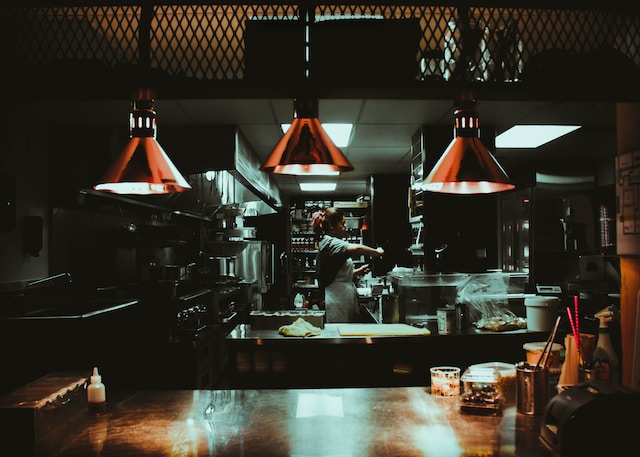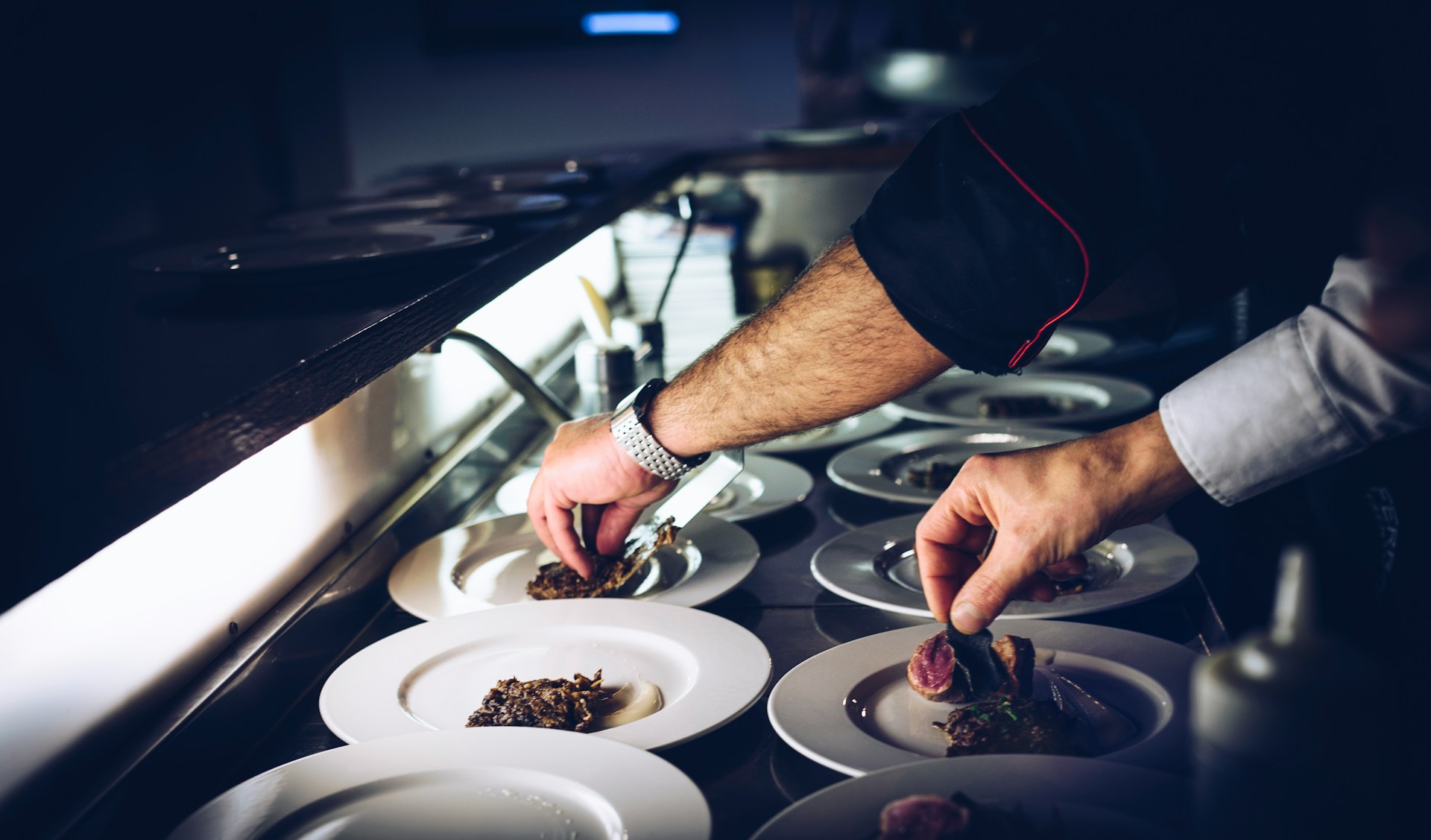Restaurants often use lighting to create a specific atmosphere for their guests. One of the most common lighting techniques used is keeping the lights low. There are several reasons why restaurants choose to keep the lights low. This article will explore these reasons and shed light on the impact it has on customers.
Setting the Mood
Restaurants carefully consider the ambiance they want to create. Lighting is an essential element in creating the right mood for customers.
- Low lighting creates a cozy and intimate atmosphere that encourages customers to relax and enjoy their meal.
- The dimmed lighting helps to reduce glare and create a comfortable dining environment.
- The contrast between the bright, warm food and the low lighting adds to the appeal of the meal and enhances the overall dining experience.
- Romantic settings such as fine dining restaurants use low lighting to create a romantic atmosphere, making it ideal for couples.
- In contrast, fast-food restaurants and cafes opt for brighter and more energetic lighting to create a lively and welcoming atmosphere that encourages customers to come and go quickly.
Creating a Sense of Privacy
Restaurants are places where people come to socialize, celebrate, or have a romantic dinner. In order to make the customers feel comfortable, restaurants often use various tactics, including dimming the lights. One of the reasons for this is to create a sense of privacy for the customers.
When the lights are low, it creates an intimate and cozy atmosphere, which encourages people to relax and enjoy their meals. The low lighting also makes it harder for people to see what’s going on around them, creating a sense of seclusion and privacy. This can be particularly important for customers who want to have a private conversation, such as a business meeting or a romantic dinner.
In addition, low lighting can also create a sense of mystery and intrigue. It can make the restaurant feel more luxurious and exclusive, which can add to the overall dining experience. Customers may feel like they are part of an exclusive club or are experiencing something special and unique.
Finally, dim lighting can also create a sense of calm and relaxation. The softer lighting can help customers unwind and de-stress after a long day, making the restaurant a more inviting and comfortable space.
Enhancing the Dining Experience
When it comes to dining out, ambiance is just as important as the food itself. The lighting of a restaurant can make a significant difference in how enjoyable the dining experience is. Here are some ways in which keeping the lights low can enhance the dining experience:
- Focusing on the Food By keeping the lights low, restaurants can focus the attention of the diners on the food itself. With the distractions of bright lights and surroundings removed, diners can fully immerse themselves in the flavors and textures of the meal in front of them.
- Creating a Cozy Atmosphere Dim lighting creates a sense of intimacy and warmth, which can make diners feel more comfortable and relaxed. This can be especially important for romantic dinners or special occasions where a cozy atmosphere can enhance the mood and create an unforgettable experience.
- Highlighting the Décor Keeping the lights low can help highlight the restaurant’s decor and artwork, creating an atmosphere that’s both stylish and sophisticated. When the lighting is low, the focus shifts to the textures, patterns, and details of the space, creating an immersive and engaging environment.
- Making Conversation Easier In a restaurant with bright lighting, conversations can be disrupted by other noises and distractions, leading to a less-than-optimal dining experience. However, with dim lighting, the noise level tends to be lower, making it easier for diners to hear and engage in conversation with their companions.
- Relieving Eye Strain Bright lights can cause eye strain and fatigue, especially for people with sensitive eyes or vision problems. By keeping the lights low, restaurants can create a more comfortable and relaxing environment that won’t strain the eyes of their guests.
Overall, keeping the lights low can enhance the dining experience by creating a cozy, intimate atmosphere that allows diners to focus on the food, décor, and company without distractions.
Energy Efficiency
Another reason why restaurants keep the lights low is for energy efficiency. With lower lighting levels, restaurants can save on their electricity bills. This is especially important for restaurants that are open for long hours and need to keep their energy costs down.
Psychological Effects
Low lighting has been shown to have a significant psychological effect on people, particularly in restaurants. The dimmer the light, the more relaxed and at ease diners tend to be, making them more likely to stay longer and order more food and drinks. This is because low lighting creates a more intimate and cozy atmosphere, which helps to foster social connections and positive emotions.
Furthermore, studies have shown that bright lights can increase stress levels and decrease our ability to taste and appreciate food. This is because bright lights can overstimulate our senses and create a sense of discomfort or unease. On the other hand, dim lighting allows us to focus more on the flavors and textures of our food, which can enhance the dining experience.
In addition, low lighting can also help to mask any imperfections or flaws in the restaurant’s décor, creating a more flattering and romantic ambiance for customers. This is particularly important in fine dining establishments, where the overall experience is just as important as the food itself.
Overall, the psychological effects of low lighting can greatly enhance the dining experience and create a more comfortable and relaxing atmosphere for customers.
The Dark Restaurant Trend
In recent years, there has been a growing trend of restaurants that take the low-lighting concept to the extreme. Dark restaurants, also known as blackout restaurants or blind dining, offer a unique dining experience where customers dine in complete darkness.
The concept was initially introduced as a way to create empathy towards visually impaired individuals and allow customers to focus on the taste and texture of the food without any visual distractions. However, it has become increasingly popular due to the novelty and excitement of the experience.
In a dark restaurant, customers are guided to their tables by waitstaff or visually impaired individuals, and then provided with a menu that they can’t read. They are encouraged to use their senses of taste, smell, and touch to identify the dishes they are eating. This creates a unique and memorable experience that many customers find enjoyable and exciting.
While dark restaurants may not be for everyone, they provide a fascinating example of how restaurants can use lighting (or lack thereof) to create a unique dining experience. By completely removing the sense of sight, dark restaurants force customers to focus on the other senses and connect with their food in a different way.




